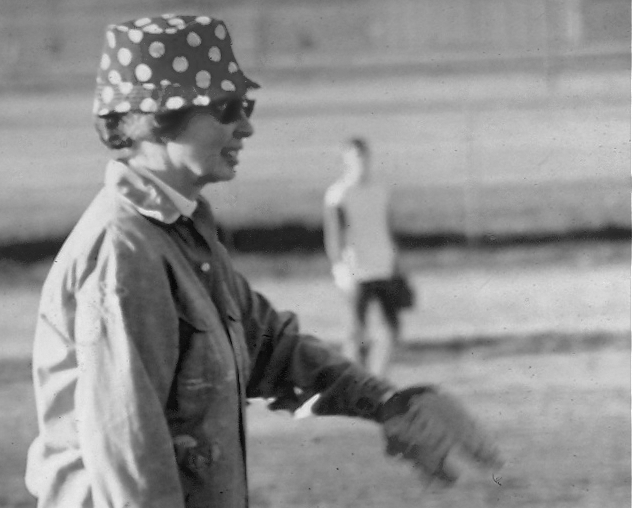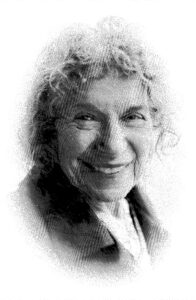Barbara C. Etzel (1926-2019): A Pioneer and Champion

by Kenda Morrison, Shahla S. Ala’i, and Edward K. Morris
Author Note: Correspondence concerning this article should be addressed to Kenda Morrison (kenda.morrison@unt.edu).

Whether training to fly cargo planes at the end of World War II or completing a Ph.D. in Developmental and Child Psychology at the University of Iowa in 1953, Barbara Coleman Etzel did not accept the traditional roles of the women in her time.
During her long and productive career, Barbara pioneered research on errorless stimulus control, leading to receipt of the prestigious Don Hake Research Award given by Division 25 of the American Psychological Association (APA) that recognizes the integration of basic and applied research. Barbara’s recognitions and accomplishments are many: she was president of the Association for Behavior Analysis International, president of APA Division 25, was an APA fellow, and was inducted into the University of Kansas (KU) Women’s Hall of Fame. Her trail blazing trajectory began early.
When on the faculty at Florida State University in 1956, her chair chose to allot salary increases based on marital status and the number of children. She did not think that was right and so she left. When she then accepted a position in the Department of Psychiatry at the University of Washington Medical School, her doctoral advisor, the cognitive psychologist Boyd McCandless, recommended that she contact Sidney Bijou, his friend from World War II, who was the director of the Institute of Child Development there. As Barbara recalled later, when she “got fed up with the Freudians,” she often joined Bijou’s Friday research group meetings. This was when he was just beginning his work on the behavior analysis of child development, a new approach to conceptualizing the process of change. During this time, Barbara began shifting from a cognitive to a behavior-analytic perspective.
At the University of Washington, Barbara not only interacted with Bijou, but also with other pioneers in our field (e.g., Baer, Sherman, Wolf). When Frances Degen Horowitz recruited Donald Baer to KU to help establish the Department of Human Development and Family Life (HDFL), they agreed that they did not want a zoo, that is, faculty members from every theoretical orientation. They wanted a clear and focused theoretical perspective and applied operant psychologists. This included Mont Wolf, Todd Risley, James Sherman, and Barbara. Reflecting on Barbara’s time at KU, Horowitz wrote:
“Genuine to the core: As a fine teacher, a dedicated researcher, an always reliable colleague and mentor, a conscientious problem solver, a caring friend, a person of impeccable integrity. This is the Barbara Etzel I know. In the years we were together at the University of Kansas, Barbara was a key voice in the design of the then fledgling Department of Human Development and Family Life (HDFL). I have always most admired Barbara for her instinctual respect and concern for everyone with whom she is in contact, be it a fleeting interaction or a more enduring relationship.”
In 1967, Barbara published the first operant study of infant crying (Etzel & Gerwirtz, 1967). She then joined HDFL until she retired in 1994, and was professor emerita until her death. Barbara was productive. Her “Law of Parsimony” article (Etzel & LeBlanc, 1979) was of great importance. It provided a clear conceptual and pragmatic framework for researchers and practitioners to help children with severe learning challenges. Her primary interest was in stimulus control, particularly as noted, errorless learning. In a Festschrift prepared in her honor, Baer wrote:
“She directed us toward the issues of antecedent control at a time when we thought altering consequences could solve all problems. She developed a model of how a preschool teaching and research laboratory should be run by creating the very environmental controls evident in her work. This book is testimony to her influence on our professional careers and to our affection for her.”
In HDFL, Barbara was a formative director of the Edna A. Hill Child Development Laboratory, director of the KU Center for Research in Early Childhood Education, and co-director of the Head Start Research and Evaluation Center. Since its inception, the Edna A. Hill Child Development Laboratory has produced hundreds of lines of research related to the well-being of young children. She created a system that continues to this day.
Barbara used our science to advocate for the most vulnerable members of our society, among them, children with learning disabilities. She helped them by training her students to be respectful, effective, and efficient. It was unacceptable to waste children’s time with poor instruction. She objected if a child was being asked to keep practicing a skill that had already been learned or if proper supports were not given to a child who was being asked to demonstrate skills they had not yet learned. She constantly reminded her students that each child’s success is the responsibility of their teachers.
Barbara’s contributions to society cannot be described without mentioning her well-known devotion to all animals, especially dogs. In addition to adopting dogs from shelters, she volunteered for the Humane Society and created a welcoming 160-acre retreat for wildlife on her beloved Woodsong Ranch where she lived for almost forty years.
So, Barbara helped the vulnerable—children, dogs, and graduate students. Over the years, hundreds of students attended her HDFL research group meetings with Judy LeBlanc and Alita Cooper, some as their advisees, some as welcome guests. Although she demanded excellence, Barbara was consistently gracious. The worst that could happen was for Barbara to call an idea “interesting.” Her use of “interesting” typically meant “of concern.” She was gently suggesting that students stretch their understanding, scientific practices, and the effects of their efforts. “Interesting” was Barbara’s cue to learn more. While students were learning, she reinforced their approximations and modeled her unique blend of science and advocacy for children.
On Tuesday, October 22, 2019, Barbara passed away at age 93 in Lawrence, KS. Her ashes were buried at Pioneer Cemetery on the KU campus. An evening reception was scheduled to honor her contributions and legacy at the May 2020 meeting of the Association for Behavior Analysis International, but will be rescheduled to May 2021. Her legacy will continue in the still-productive KU child development labs; it will continue through enduring lines of research and sustainable programs of practice; it will continue with her students, now engaged in meaningful scholarship and teaching; it will continue with women in behavior analysis who benefitted from her early championing for seats at the behavior science table.
Bibliography
Ala’i-Rosales, S. (2014, November 8). Behavior analysis history. An Interview with Barbara Etzel [Video File] Retrieved from https://www.youtube.com/watch?reload=9&v=MUCOynvx8_c
Baer D. M. (1993). A brief, selective history of the Department of Human Development and Family Life at the University of Kansas: The early years. Journal of Applied Behavior Analysis, 26(4), 569–572. doi:10.1901/jaba.1993.26-569
Baer, D. M. & Pinkston, E. M. (1997). Environment and Behavior. Routledge: New York, NY.
Barbara Etzel, Ph.D. (n.d.) Retrieved from https://emilytaylorcenter.ku.edu/womens-hall-of-fame/etzel-barbara
Etzel, B. C., & Gerwirtz, J. L. (1967). Experimental modification of caretaker-maintained high rate operant crying in a 6- and a 20-week-old infant: Extinction of crying with reinforcement of eye contact and smiling. Journal of Experimental Child Psychology, 5(3), 303-317. doi: https://doi.org/10.1016/0022-0965(67)90058-6
Etzel, B. C., & LeBlanc, J. M. (1979). The simplest treatment alternative: The law of parsimony applied to choosing appropriate instructional control and errorless-learning procedures for the difficult-to-teach child. Journal of Autism and Developmental Disorders, 9(4), 361-382. doi: 10.1007/bf01531445
Etzel, B. C., LeBlanc, J. M., & Baer, D. M. (Eds). (1977) New Developments in Behavioral Research: Theory, Methods, and Applications. Lawrence Erlbaum Associates: New York, NY.
Goetz, E. M., & Allen, K. E. (1983). Early Childhood Education. Aspen Systems Corporation: Rockville, MD.
LeBlanc, J. M., Etzel, B. C., & Tyler, R. M. (1974). Social Interaction Observation: A Manual for Training and Data Collection. University of Kansas: Lawrence, KS.

